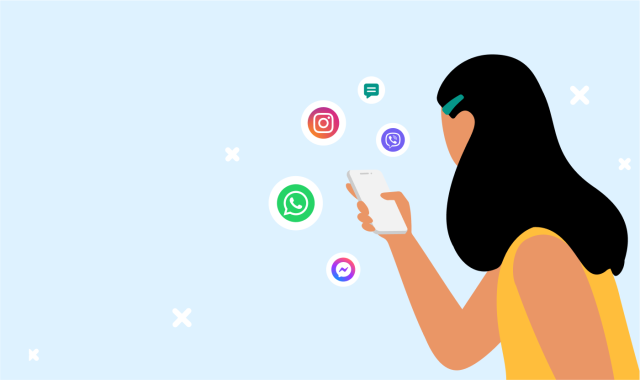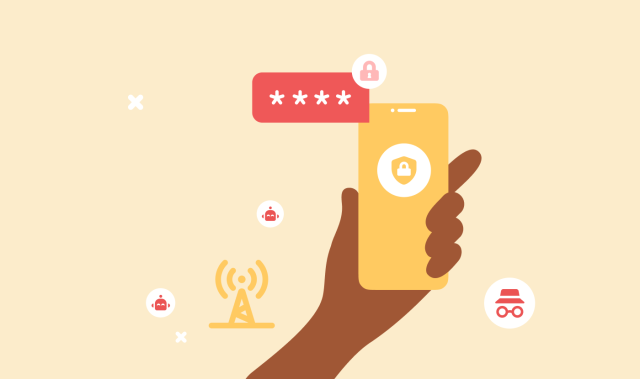Businesses are constantly weighing the pros and cons of different conversational messaging channels. Whether it's through chatbots, SMS, or messaging apps like WhatsApp or Facebook Messenger, the ability to have real-time, personalized conversations with users on different channels has transformed customer support, sales, and marketing.
Whatever the use case, it’s hard to argue with the business benefits of investing in conversational messaging. Conversational messaging channels allow you to reach every mobile phone on the planet, with channels like SMS achieving open rates of up to 98%.
But what exactly is conversational messaging, and how do you know which channels your customers are actually using? In this article, we’ll go through the basics of conversational messaging, and how you can use different channels to engage your customers faster.
What is conversational messaging?
Conversational messaging describes two-way, one-to-one conversations that a business has with its customers on their preferred messaging channels.
Conversational messaging can be initiated by a consumer or by a business. Imagine a user reaching out to a brand via WhatsApp to track their package’s delivery status, or a business sending a survey to clients via Rich SMS to gather valuable feedback. Additionally, customers use conversational messaging when they chat with bots or dedicated customer service representatives through live chat on a business’ website.
These are just a few examples, but what makes them conversational messaging is that they’re two-way, creating personal, meaningful relationships and engagements between brands and their customers.
Benefits of conversational messaging
While SMS remains crucial for business messaging, conversational messaging brings a range of new features that can really help businesses strengthen relationships with their customers.
If users are already familiar with a particular messaging app because they use it to stay connected with friends and family, it’s much easier for a brand to use that channel to reach out to them. Instead of having to switch between email, mobile apps, and customer service calls, users can engage in one continuous, seamless, and intuitive conversation with a brand on their favorite chat app.
So, the greatest advantage of conversational messaging is that a business isn’t introducing another app for a customer to install – and going through the hassle of driving downloads – instead, they’re integrating conversations into an app they’re already familiar with.
More specifically, conversational messaging can provide several benefits to businesses, including:
-
More frequent sales opportunities: McKinsey estimates that companies that excel in personalization generate revenue growth faster than their peers, and our research indicates that a whopping 89% of consumers want two-way conversations via messaging apps. This means that brands that provide personalized, two-way conversations with their customers will provide customers with experiences they’re looking for, ultimately closing more sales.
-
Increased customer engagement and reach: Sending targeted, personalized offers to customers on their favorite messaging channels can help ensure that all communications are relevant to their needs and interests.
-
Valuable opportunities to educate customers about a brand’s offering: Tailored messages can help businesses keep customers informed about timely offers and build anticipation for new products or offerings.
Next, we’ll go into how conversational messaging can help your business stay competitive in an ever-changing world.
The conversational messaging landscape
A consumer who needs something – she's researching rates to refinance her mortgage, he wants new running shoes, their cable signal just died – might know which brand they should contact to solve their problem. But will they download a specific app to get an answer? Some might, but many will prefer contacting the business through an app they’re already using.
And they should! Three billion users are already on messaging apps and 100 billion messages are sent daily between WhatsApp, Facebook Messenger, and Instagram. Despite this, brand-to-customer communications on mobile messaging platforms remain untapped territory for many brands.
But first, understanding the preferences and habits of your target audience is key to selecting the right channels to engage with them effectively. By strategically aligning your business with the messaging channels that dominate your customers’ digital landscapes, you can potentially tap into a massive user base, amplify your reach, and seize unparalleled opportunities for growth.
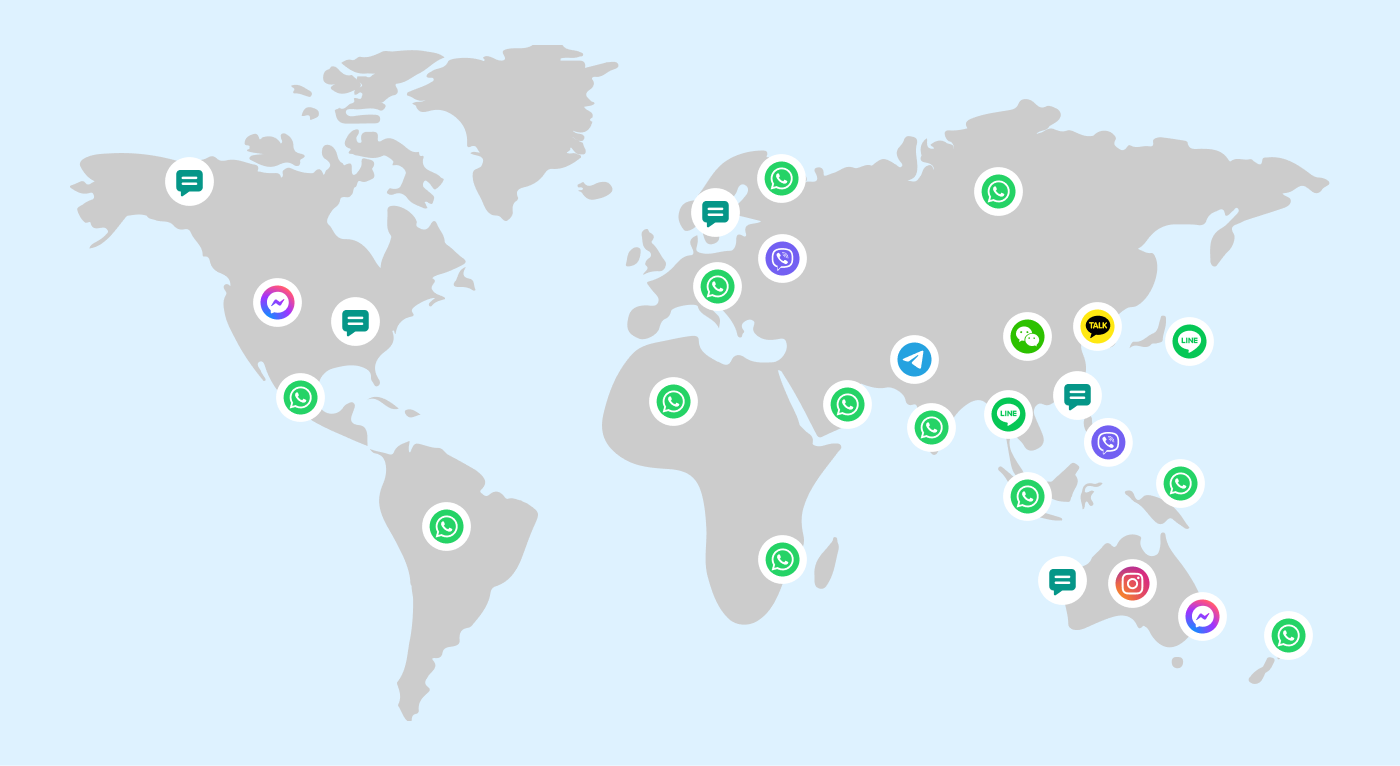
No matter which channels customers prefer, each conversational messaging channel has unique capabilities and popularity in different regions around the world. While messaging channels like KakaoTalk, WeChat, and LINE dominate much of the Asian market, WhatsApp continues to be the most popular messaging app in India, South America, and much of Europe. Facebook Messenger and SMS are the most popular channels in North America.
Popular conversational messaging channels
SMS has a global read rate of 95% within three minutes. When a brand uses both SMS and conversational chat apps, they can turn impressive open rates and an app-like, rich media experience into a direct, reliable connection with customers. And consumers in an “always on” world expect brands to be fluent in their needs. In fact, 73% of consumers say that a personalized experience inspires loyalty, according to IDC. That’s a challenge for many businesses – but it’s an even greater opportunity.
Below are a few of the most popular conversational messaging channels. Each of them offers varying formats and features that brands can use to have meaningful conversations with customers.
SMS and MMS
Nearly 70% of the world uses SMS and MMS – that’s 5.6 billion people. SMS and MMS are supported by every mobile device in the world, meaning they’re among the most versatile communication channels.
While the terms “SMS” and “MMS” are often used interchangeably, there are slight differences – most notably, that MMS is most often used by brands to send rich media files like images, GIFs, and videos.
More about SMS and MMS: To learn more, check out this brief introduction to the differences between SMS and MMS, or this post for a side-by-side comparison of MMS and SMS channels.
RCS
RCS (Rich Communication Services) is a feature-rich, conversational messaging chat experience available for Android devices. RCS is commonly used for marketing campaigns, commerce alerts, and support notifications.
RCS builds on the capabilities of SMS to engage with customers and drive them toward conversion.
More about RCS: Learn all about RCS here and check out this post to discover how RCS compares to SMS.
WhatsApp is the world’s most popular messaging app, with more than 2 billion monthly active users.
And it’s not just popular for personal use: WhatsApp is also widely used for marketing, customer support, and sending transactional notifications. With more than 175 million users messaging business accounts every day, it’s no wonder that so many brands are turning to WhatsApp Business for conversational marketing.
More about WhatsApp for Business: Learn about differences between WhatsApp and WhatsApp Business or learn about WhatsApp pricing.
Facebook Messenger and Instagram
Facebook Messenger is the world’s second most popular messaging app, with over one billion monthly active users. It’s the most popular messaging app in the USA, parts of Europe and Northern Africa, and parts of Asia like Indonesia, the Philippines and Malaysia.
Like Messenger, Instagram is also gaining momentum as a conversational channel for businesses. With over one billion users who are mostly under 35 years old, Instagram Messages services are popular for asking for business support. 90% of Instagram users follow at least one business account, which makes Instagram a great place for users to find more products and services that are relevant to them.
Learn more about Messenger and Instagram: Check out how leading fashion house Zadig&Voltaire used Instagram to engage with their over 1 million followers.
Super apps (KakaoTalk, LINE, WeChat)
Super apps like KakaoTalk, LINE, and WeChat have revolutionized the landscape of conversational messaging. With millions of active users in Asia, these platforms go beyond traditional messaging functionalities, allowing users to order taxis, buy products, manage finances, and more within a single app. In some Asian countries, these apps have become the most important tools in people’s life (85% of South Korea’s population is on KakaoTalk), offering huge opportunities for businesses operating in these regions.
As conversational messaging channels, these super apps enable businesses to engage with customers on a more personal level by delivering highly interactive and tailored messaging experiences to their customers.
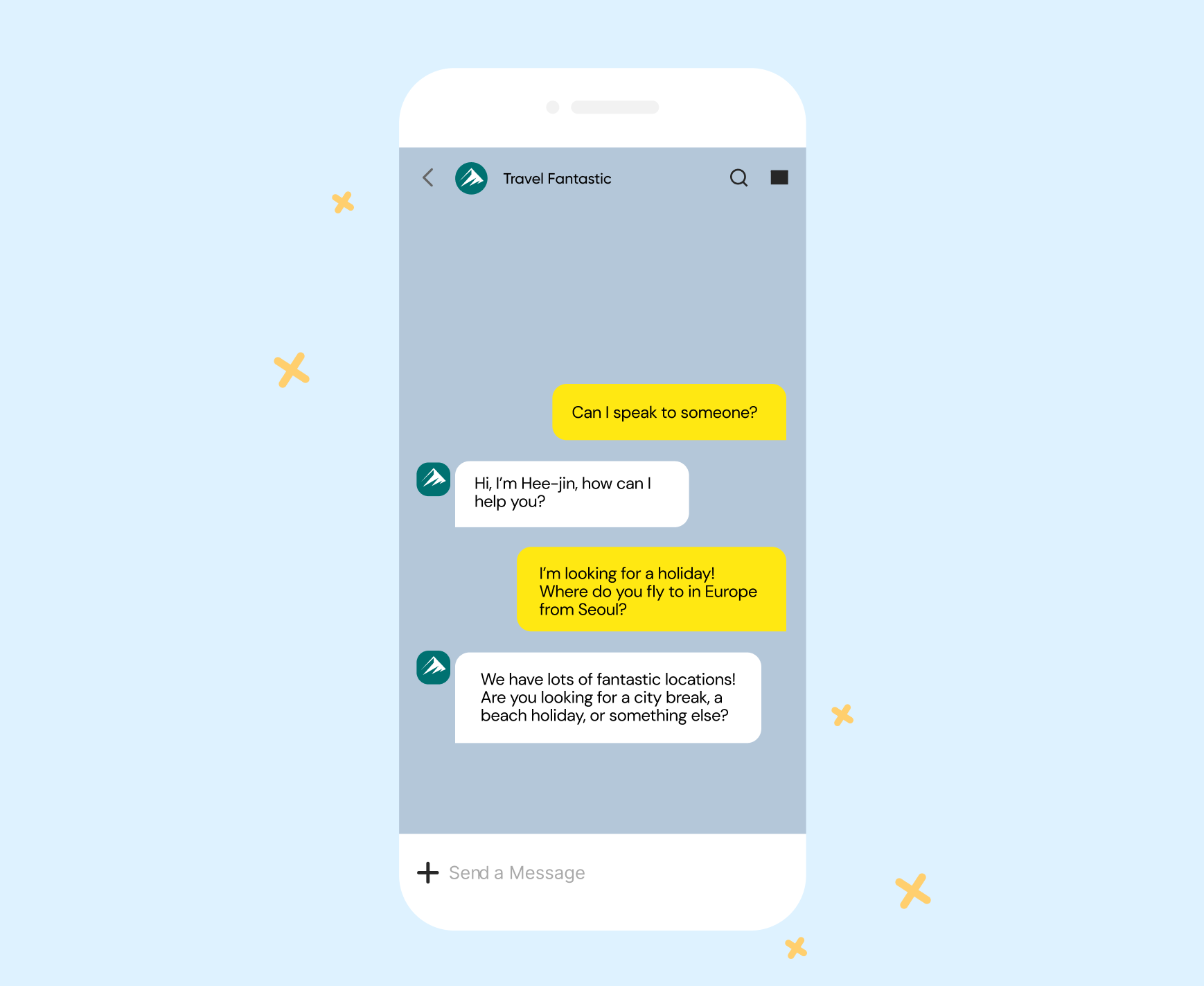
Viber and Telegram
Telegram and Viber are two fast-growing messaging apps with a strong focus on security and privacy. In the past years, Telegram has increased its popularity as WhatsApp's main competitor. Viber is most popular across Eastern Europe, with over 250 million monthly active users.
Both Telegram and Viber excel in providing reliable messaging services, with end-to-end encryption for chats and a user-friendly interface that allows users to connect with friends, family, and businesses effortlessly.
In-app chat and push notifications
While the ability to connect with users on the apps they most frequently use is one of the biggest benefits of conversational marketing, there are still many services out there that want to develop their own apps to offer users the best possible experience.
In those cases, in-app chat and push notifications can be used to engage with customers who have downloaded these mobile apps. They allow for timely, personalized interactions with customers so businesses can provide efficient support, and ultimately drive customer loyalty and satisfaction.
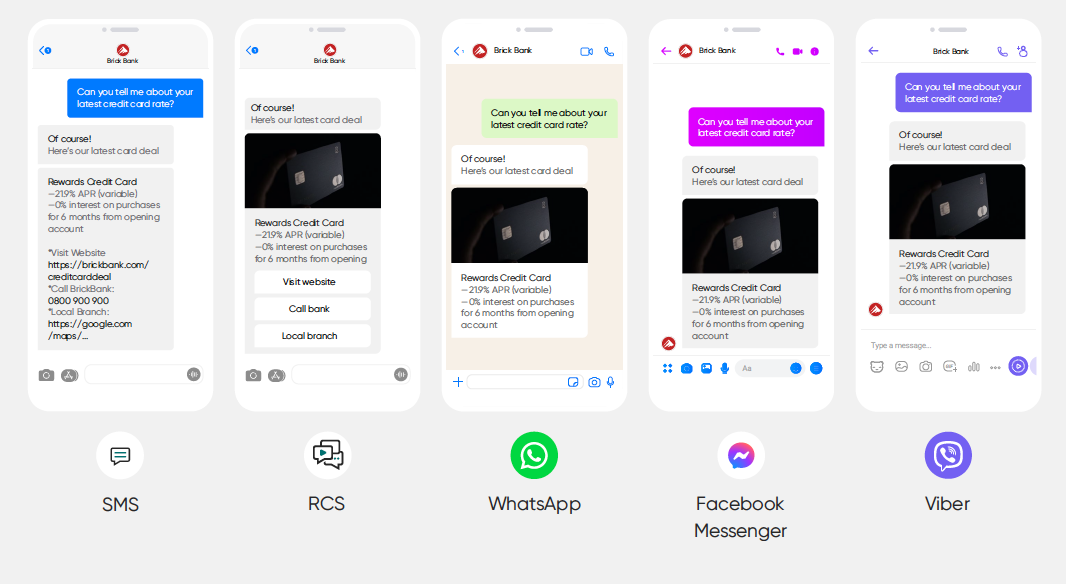
Top tips to create a winning conversational messaging strategy
We already mentioned it when we covered the benefits: Conversational messaging can drive business outcomes like reduced churn, better customer experience, lower business costs, and higher customer satisfaction.
So, how do you make the most of these channels? Here are a few winning strategies that have enabled brands to achieve exceptional results.
Increase accessibility and personalization
We all want customers to be happy, and nothing makes a customer happier than hassle-free, seamless conversations with a brand when they have an issue.
With conversational messaging channels like SMS, RCS, and WhatsApp, you can offer customers the convenience of reaching out for support, inquiries, or guidance directly within their preferred applications or websites. This empowers customers to engage with brands at any time, regardless of their location or time zone.
Ultimately, providing a more accessible and personalized relationship with the brand results in a better customer experience and increased revenue. For example, Cdiscount, the third largest French e-commerce website, expanded its conversational messaging capabilities by adding RCS to better highlight its product offering and saw a 4% increase in revenue overall and 9% increase in cart size.
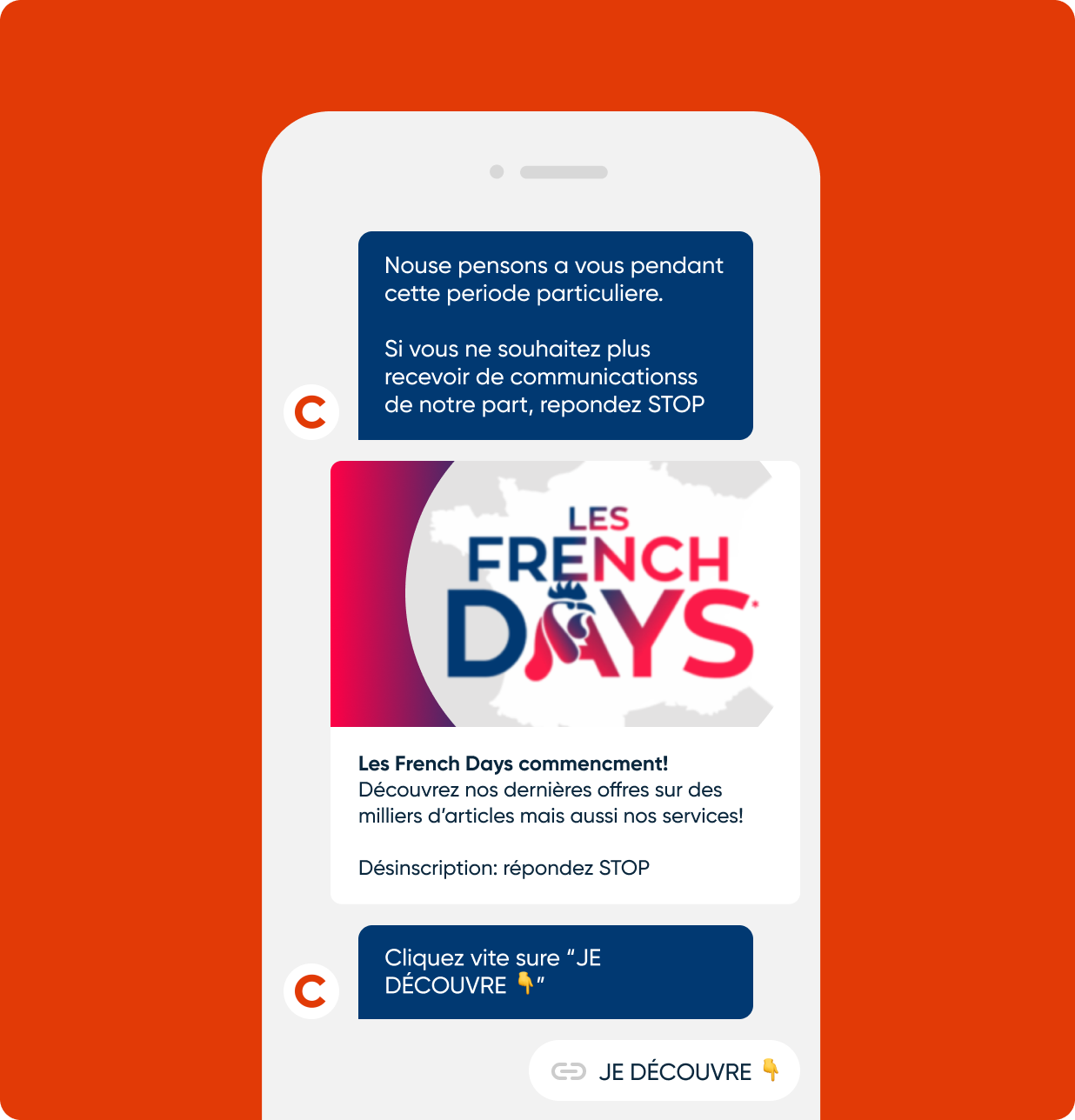
Whether it's addressing pre-purchase queries, seeking post-purchase assistance, or providing feedback, conversational messaging can increase touchpoints between customers and brands, fostering a positive experience throughout the entire customer journey.
Provide proactive, seamless interactions
With conversational messaging, businesses can empower users to resolve their own needs, when they want it, on their channel of choice.
Suppose you’re a bank that needs to send a customer a fraud alert and get back a “yes” or “no” response immediately. Your contact center reviews the customer’s opted-in channels – say WhatsApp, RCS, and SMS – and tries WhatsApp first, because that’s their most recently used channel. If the number returns “Message can’t be delivered,” the message will be transcoded into RCS, then SMS, and so on until the user gets the message.
This type of proactive, seamless brand interaction makes for a less intrusive, more welcome customer experience, and takes some weight off the shoulders of customer care teams to focus only on the most pressing and complex requests.
This is exactly what Argenta, Belgium’s fifth-largest bank, did when they turned to Sinch to develop Charlie, a chatbot to help customers with their most frequent questions and complete transactions. Charlie now not only answers around 20% of incoming transactions but helped Argenta bank a 95% customer satisfaction score!
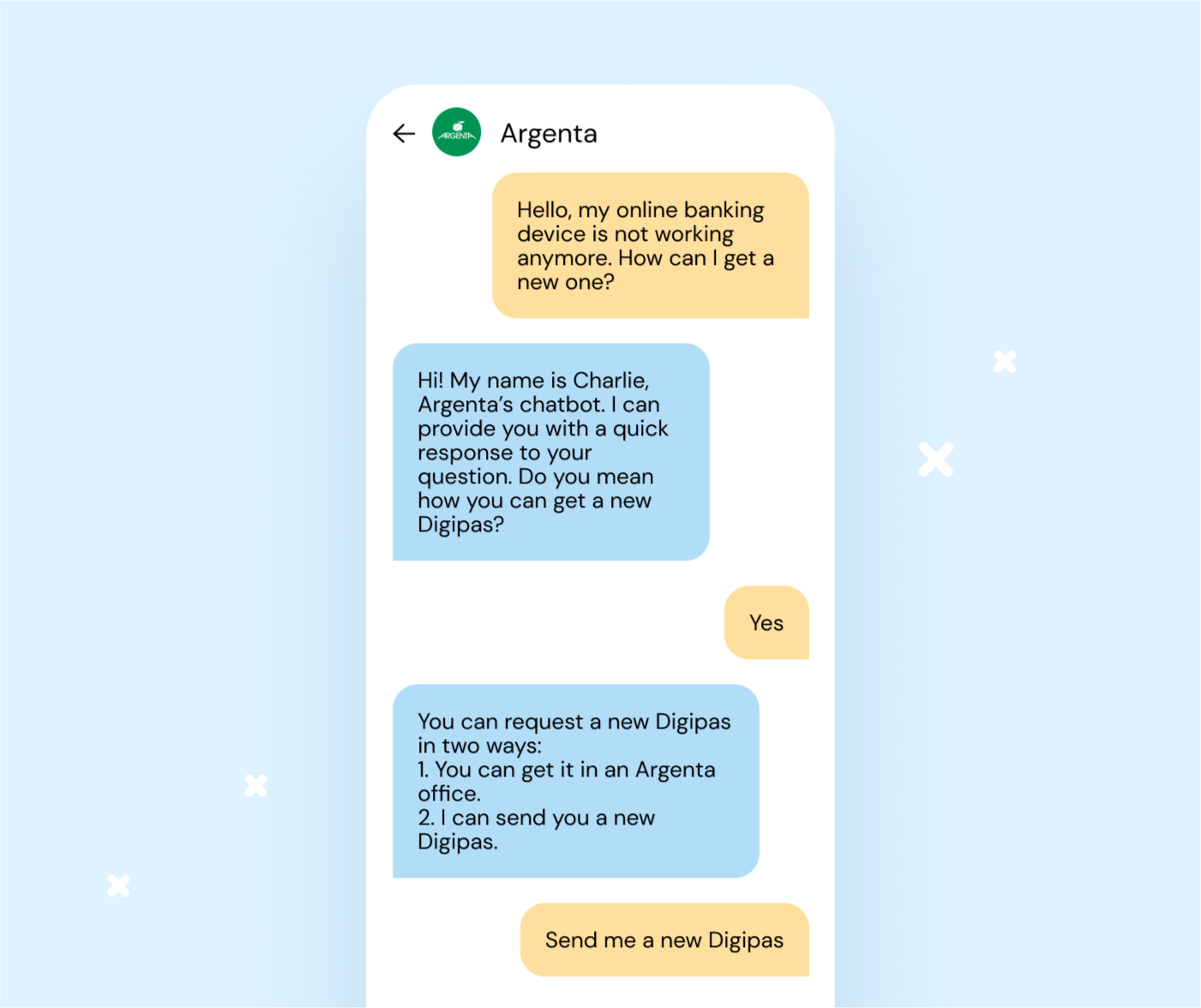
Most importantly, users are more comfortable engaging with businesses on a channel they’re already familiar with, ensuring security and fostering a sense of loyalty and trust.
Unlock the power of AI and automation
A 2023 report by McKinsey estimates that generative artificial intelligence (AI) has the potential to boost productivity by saving 60 to 70 percent of workers’ time through automation of their work. Conversational AI bots can handle routine and repetitive tasks, freeing up human agents to focus on more complex and specialized issues, where their expertise is truly needed.
And because chatbots have advanced interaction skills, they can be used in many different industries to offer richer, more personalized customer experiences, from SaaS to retail and even finance.
A great example of effectively utilizing AI to enhance the customer experience is Belfius, the leading banking app in Belgium. The institution rolled out a personalized AI chatbot to help its nearly 3.5 million customers to file their insurance claims, making the process simpler for the user and saving the customer care team the equivalent of 600 working hours.
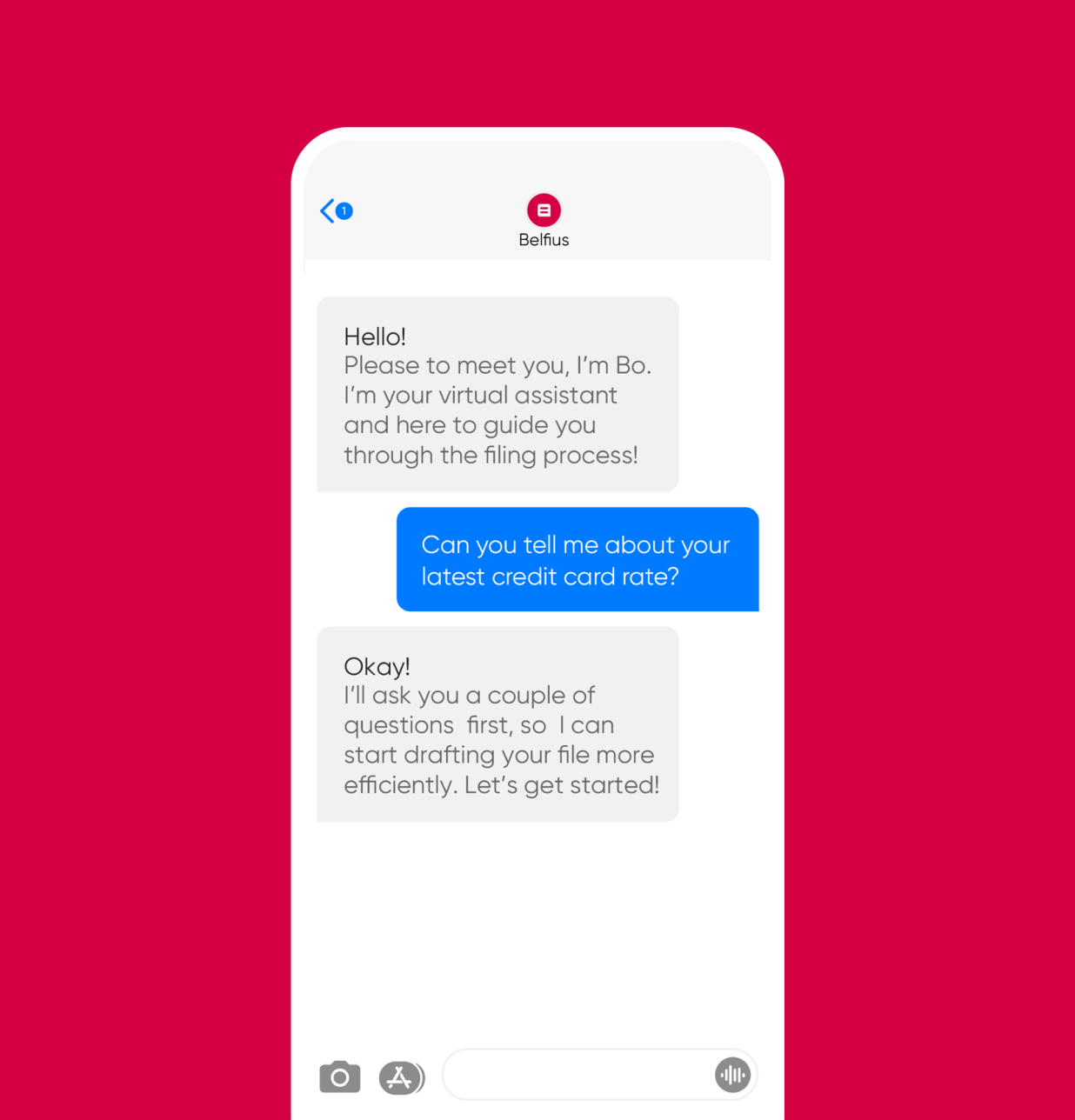
Get started with conversational messaging
Conversational messaging is a powerful messaging strategy that can provide considerable growth and customer engagement opportunities for businesses.
But getting it right isn’t always easy. The key lies in adopting an omnichannel approach that strategically leverages the most popular messaging channels for a specific target audience. Conversational channels like SMS, RCS, WhatsApp, Messenger, and super apps like KakaoTalk, LINE, and WeChat, allow businesses to have seamless, personalized two-way conversations with their customers, tapping into massive user bases and amplifying their reach.
Ready to exceed customer expectations with conversational messaging? Download “The ultimate guide to conversational messaging channels” for in-depth insights, best practices, and winning strategies for using conversational channels to drive business outcomes.
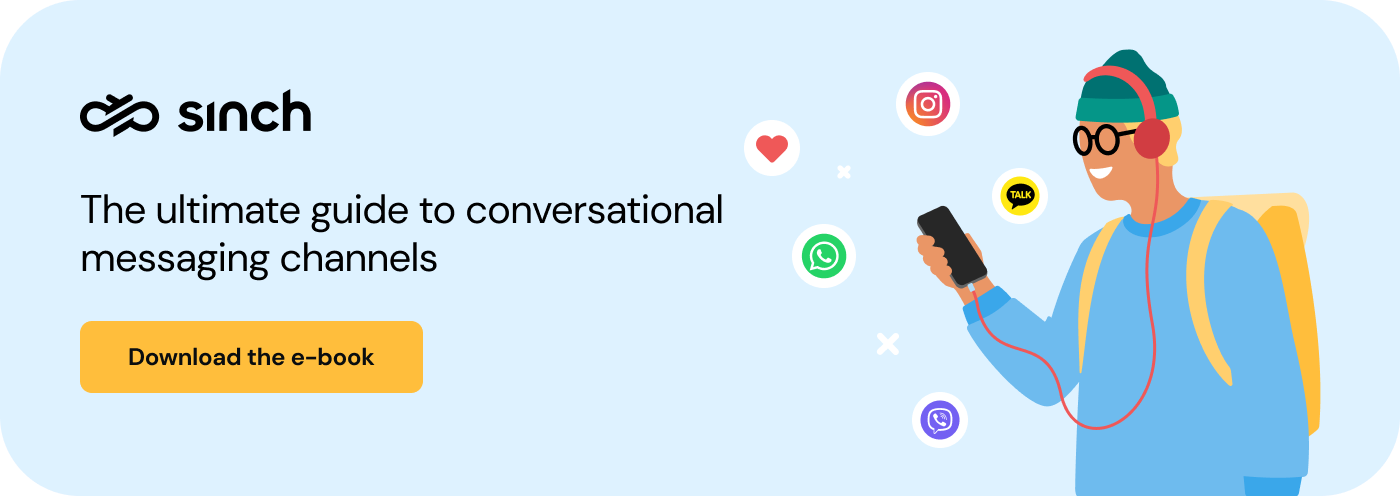
And once you’re ready to implement a winning conversational messaging strategy, let’s chat. Our team is ready to help you build a mobile-first experience your customers will love.
